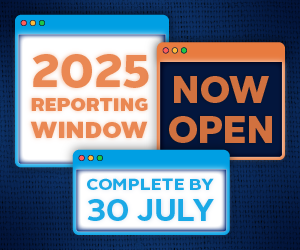By Ophir Bruck (@OphirBruck), Relationship Manager, Signatory Relations, PRI and Saumya Mehrotra (@mehrotrasaumya), Specialist, Stewardship (Climate Action 100+), PRI
Student-led fossil fuel divestment campaigns have been instrumental in bringing climate change to the table at many higher education endowments and foundations across the world. While the merits of divestment are debated by decision makers and stakeholders, it is important that the conversation does not begin and end there. For endowments and foundations that are serious about risk management, generating sustainable long-term returns and doing their part to address climate change and the transition to a low-carbon economy, taking a more comprehensive approach is key.
The PRI, in partnership with the Intentional Endowments Network (IEN), hosted a webinar on July 9 that focused on the investment implications of climate change and highlighted tools and resources endowments and foundations can leverage to develop a thoughtful, multi-pronged approach to managing climate-related risks and opportunities. We heard from senior leaders at three endowments of varying sizes – Kate Murtagh, Chief Compliance Officer and Managing Director for Sustainable Investing at Harvard Management Company (HMC); Daren M. Smith, President and Chief Investment Officer at University of Toronto Asset Management Corporation (UTAM); and Jeff Mindlin, Chief Investment Officer at Arizona State University Enterprise Partners (ASU) – on the strategies they’ve implemented to manage risks and invest in opportunities emerging from the low-carbon transition.
Why should endowments care about climate change?
At the outset of the webinar, the PRI’s Director of Climate Change, Sagarika Chatterjee, spoke about the growing awareness among investors that climate change is a systemic risk that affects all asset classes and sectors, and that the transition to a low-carbon economy presents significant investment opportunities. We conducted a poll during the session asking attendees what their organization’s primary motivations were for considering climate change in investment decision making: “all of the above” was voted highest, which included “aligning portfolio with organizational mission” (second highest), “investment opportunities” (third), “risk management” (fourth) and “pressure from stakeholders/clients” (fifth).
The Intergovernmental Panel on Climate Change has concluded that in order to keep global temperatures from rising above 1.5 degrees Celsius – the highest safe limit to avert catastrophic environmental and social impacts – global greenhouse gas (GHG) emissions will need to decline by 45 percent by 2030 and reach net zero by 2050. While governments have begun responding with policies to limit GHG emissions, action has so far been insufficient to achieve the commitments made under the Paris Agreement. Yet, as the realities of climate change become increasingly apparent, it is inevitable that governments will be forced to act more decisively than they have thus far. The question for investors now is not if governments will act, but when they do so, what policies they will use and where the impacts will be felt. Moreover, how should abrupt policy change, triggered by political, social or climatic events, resulting in a structural break in the correlation between historic and future expected returns, be incorporated into portfolio construction?
To help answer these questions, the PRI developed the Inevitable Policy Response (IPR) program, which forecasts the climate-related policies that will be implemented out to 2050, quantifies the impact of these policies on the real economy and financial markets and provides guidance to investors on how to manage associated risks. Sagarika walked attendees through IPR’s modeling, which forecasts a global policy response by 2025 that will be forceful, abrupt and disorderly because of the delay to date, and an associated market repricing that will lead to $1.6 - $2.3 trillion in stock market value destruction concentrated in four sectors: energy, consumer cyclicals, non-energy materials and utilities. She also highlighted the significant investment opportunities resulting from falling renewable energy costs, the rising intermittency ceiling and electrification of transport, among other trends, as jurisdictions look to private capital for the $2.4 trillion needed annually to 2035 to finance the energy transition.
Investment decision makers at endowments can often get ensnared in deliberation around where climate considerations may or may not align with their fiduciary duties. In her opening comments, Alice DonnaSelva, Managing Director at IEN, clarified that the Uniform Prudent Management of Institutional Funds Act (“UPMIFA”) and the Uniform Prudent Investor Act (“UPIA”), which generally govern US endowment and foundation investments, compel fiduciaries to act in alignment with the institution’s mission and to manage associated risk exposures to the fund and to the endowment’s goals. Given that climate change poses financially material risks to investors, failing to incorporate climate risks in investment analysis and decision making can be seen as a failure of fiduciary duty. Alice also pointed out that for colleges and universities that have sustainability and/or contribution to the public good as part of their mission, the duty of loyalty under these two acts should compel them to consider climate change and its impact on their stakeholders in investment decisions.
How can investors respond to climate change?
The PRI has developed a suite of tools and resources to guide asset owners through the process of developing an effective, comprehensive strategy to manage climate-related risks and opportunities. The PRI’s climate change starter guide for asset owners introduces a three-pillar framework:

Investment process
Stress testing portfolios against climate-related physical and transition scenarios provides investors with a total fund snapshot of risk exposure and where it is concentrated. Numerous free-to-use and commercially available climate scenario analysis tools are available to investors, including the Paris Agreement Capital Transition Assessment (PACTA) tool, developed by the 2 Degrees Investing Initiative in partnership with the PRI. UTAM reports that its climate scenario analysis process is integrated into its risk system and propagated across all holdings to determine an overall climate-related VaR (Value at Risk).
Endowments and foundations should engage their managers to better understand how they are managing climate-related risks and opportunities and can leverage existing resources to do so, including the climate change due diligence questionnaire found in the PRI’s starter guide for asset owners. A growing number of asset owners are also reassessing and adjusting strategic asset allocation frameworks to account for forward-looking climate-related physical and transition risks and opportunities (see the PRI’s discussion paper and case study series on SAA).
Allocating capital to low-carbon investments is one of the most impactful and important ways endowments and foundations can contribute to climate solutions while managing portfolio risk and earning competitive returns. Investment opportunities span asset classes and include green and sustainable development bonds financing renewable energy infrastructure and climate adaptation projects; regenerative agriculture and sustainable forestry funds; green real estate; and public and private companies driving the transition to a just, low-carbon economy.
Last year, the PRI and UNEP FI launched the United Nations-convened Net Zero Asset Owner Alliance, an ambitious initiative to transition investment portfolios to net zero greenhouse gas emissions by 2050, in line with the Paris Agreement. This year HMC became the first higher education endowment to commit to transitioning its portfolio to net zero by 2050, and UTAM plans to reduce the carbon footprint of its endowment and pension investment portfolios by at least 40 percent by 2030.
Engagement
Stewardship, which includes shareholder engagement, bondholder engagement and proxy voting, is generally regarded as one of the most effective mechanisms to reduce climate-related portfolio risk and drive real-economy outcomes in line with the Paris Agreement. Climate Action 100+ is a collaborative investor initiative that is engaging 100 ‘systemically important emitters’ that together account for two-thirds of annual global industrial greenhouse gas emissions, alongside 61 additional companies with significant opportunity to drive the clean energy transition. Climate Action 100+ asks companies to implement a strong, climate-competent governance framework; take action to reduce greenhouse gas emissions across the value chain in line with the Paris Agreement; and provide enhanced corporate disclosure in line with the Financial Stability Board’s Task Force on Climate-related Financial Disclosures (TCFD).
To date, more than 500 investors with more than $47 trillion in assets under management have signed on to Climate Action 100+, and the initiative has made notable progress against its objectives. Since the start of the initiative, 120 companies have established board-level oversight on climate issues, 50 companies have committed to achieve net-zero emissions by 2050 or sooner and 59 companies have formally supported the TCFD recommendations. Despite this progress, only nine percent of target companies have “Paris-aligned” business strategies, highlighting a crucial ambition gap to be addressed. Both UTAM and HMC are signatories to Climate Action 100+, and HMC has participated in two additional PRI-coordinated engagements – one on corporate climate lobbying and another on reducing methane emissions in the oil and gas sector (a list of PRI-coordinated climate-related collaborative engagements can be found here).
In addition to collaborative engagement, it is critical that endowments and foundations vote their proxies in line with climate objectives. UTAM’s President and CIO, Daren Smith, shared that UTAM has taken back proxy voting from managers in all segregated accounts and adopted the sustainability voting policy of its proxy advisor in addition to hiring a third-party service provider to engage with companies on their behalf. For pooled accounts, an agreement can be made with the investment manager to grant the asset owner the ability to vote proportionally on shares held. Where this is not possible, voting considerations should be an intrinsic part of the endowment’s manager selection, appointment and ongoing monitoring process.
Finally, endowments and foundations can engage with public policy makers and regulators to advocate for a policy and regulatory environment that is in line with the goals of the Paris Agreement. Subscribers to the PRI’s Collaboration Platform receive weekly updates on corporate and policy engagement opportunities.
Disclosure
To make informed investment decisions, investors need consistent, decision-useful information on how companies are managing climate-related risks and opportunities, and asset owners need to understand their managers’ policies and processes in this regard. To promote greater rigor and consistency in climate-related disclosures, the TCFD developed a voluntary reporting framework that provides recommendations for how both companies and investors should disclose climate-related risks and opportunities across four areas: governance, risk management, strategy and metrics and targets.
In January 2018, the PRI introduced a set of TCFD-aligned questions in the PRI Reporting Framework, and in 2020 these questions were made mandatory to report on (but voluntary to disclose) for all signatories. As a result, there was a 3.5X increase in the number of signatories providing climate-related disclosures, with 20 percent of them making at least part of their responses publicly available.
An opportunity for climate leadership
Next month the PRI will be announcing the 2020 PRI Leaders’ Group, and climate reporting is this year’s thematic focus. To be considered for the Leaders’ Group, signatories must demonstrate a strategic, multi-pronged approach to managing climate risks and opportunities in line with the TCFD framework. We hope this blog and the associated webinar have provided guidance on developing a thoughtful, comprehensive climate strategy that transcends any single action or political statement, and the tools and resources endowments and foundations can leverage to do so.
This blog is written by PRI staff members and guest contributors. Our goal is to contribute to the broader debate around topical issues and to help showcase some of our research and other work that we undertake in support of our signatories.Please note that although you can expect to find some posts here that broadly accord with the PRI’s official views, the blog authors write in their individual capacity and there is no “house view”. Nor do the views and opinions expressed on this blog constitute financial or other professional advice.If you have any questions, please contact us at [email protected].












